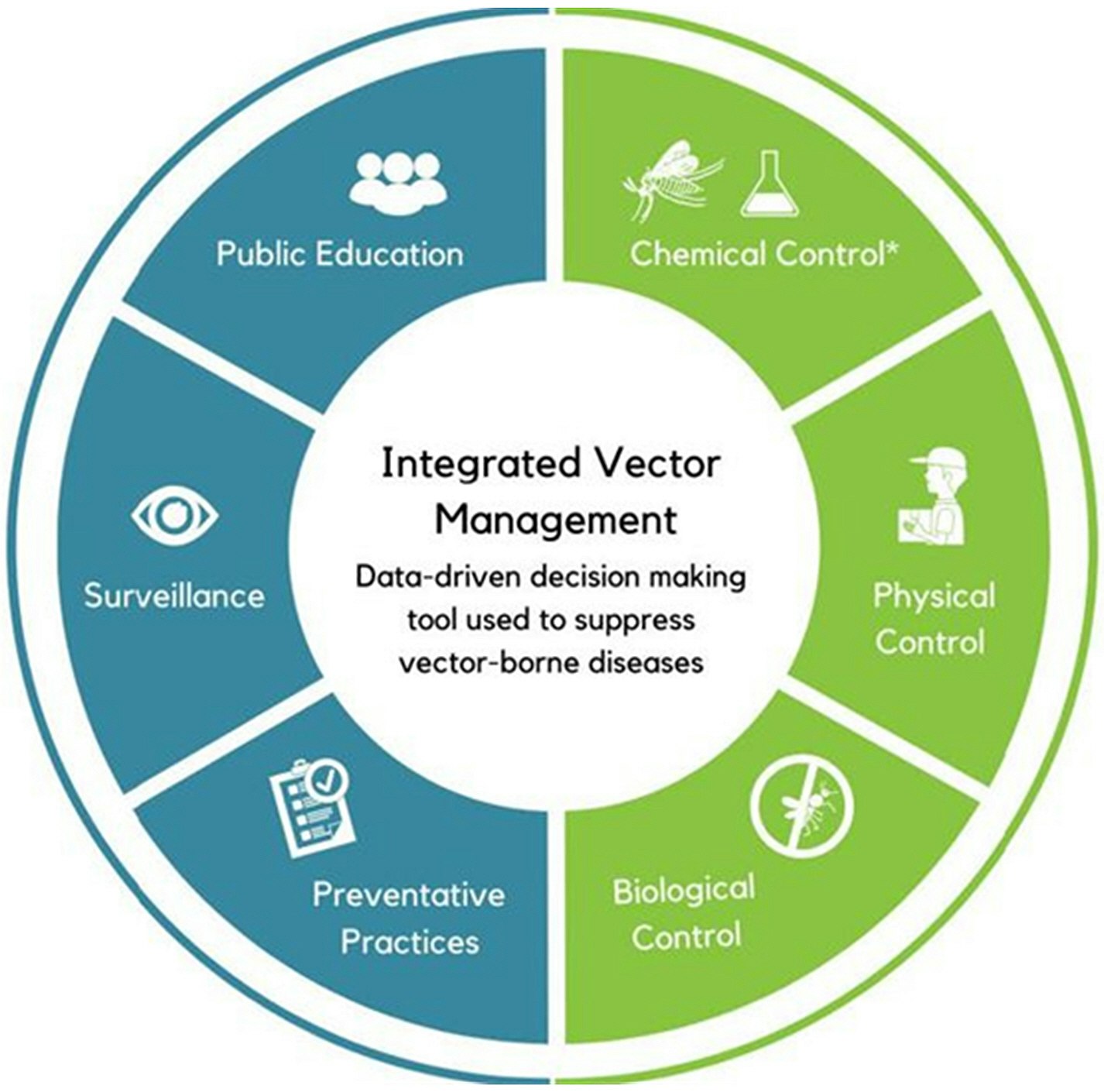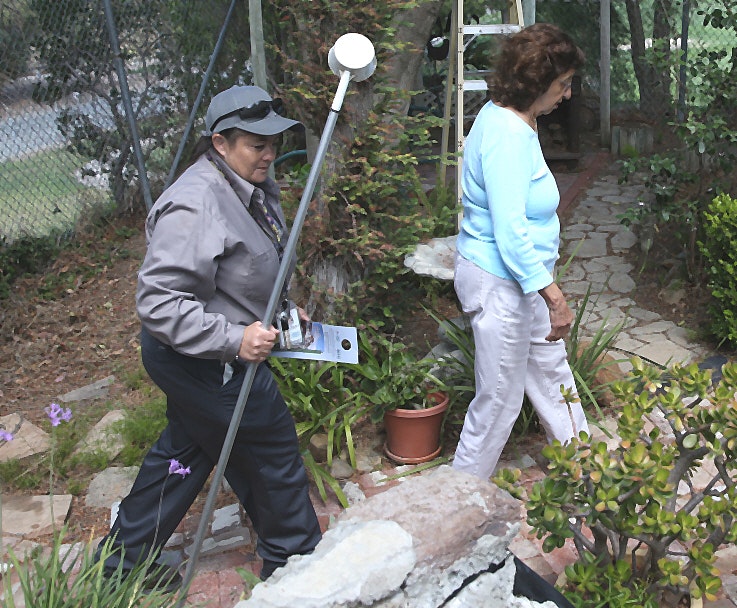How the District Controls Mosquitoes in Contra Costa County
Protecting Public Health Through Integrated Vector Management
Integrated Vector Management—it sounds important, but what is it?

In simple terms, Integrated Vector Management (IVM) is a toolbox in which the Contra Costa Mosquito and Vector Control District (District) has a diverse number of tools to protect public health.
A more detailed explanation of IVM is:
- IVM is an evidence-based, data-driven decision-making tool used to suppress vector-borne diseases which
- Prioritizes surveillance of mosquito populations, removal of breeding sites, public outreach, and education campaigns, and
- Incorporates various tools to target mosquitoes at different life stages which can include chemical control
When implementing the District's IVM program, District employees continually evaluate the strengths, weaknesses, risks, and resource costs of each type of intervention to determine what combination in a given area is most appropriate for the current risk posed to public health from mosquitoes and the pathogens they transmit.
Larval Mosquito Control
The primary way the District reduces the risk of mosquitoes is by focusing on young mosquitoes, or larvae, while they develop from egg to adult in water.
Residential Mosquito Service

- Upon receiving a Contra Costa County resident's service request, District employees provide residential mosquito service, which includes an inspection of the property for any mosquito sources.
- During the inspection, District employees may dump out standing water and will select the best option to control the larval mosquitoes which may involve placing mosquito-eating fish and/or using a public health product registered by the U.S. Environmental Protection Agency (EPA) and the California Department of Pesticide Regulation (DPR) to control mosquito larvae in a water feature. If fish are placed, they will eat the young mosquitoes in the water, preventing them from developing into adult mosquitoes.
Inspection of Public Water Sources
- District employees also inspect public water sources including creeks, ponds, canals, and other public areas of standing water throughout Contra Costa County.
- District employees use special equipment to collect water in search of larval mosquitoes.
- When found, District employees use the most appropriate steps to stop the larval mosquitoes from developing into adults that could be capable of transmitting mosquito-borne illness.
- District employees may place mosquito-eating fish in the water source to eat the larval mosquitoes and/or they may use an EPA and DPR-registered public health product to control mosquito larvae.

Adult Mosquito Control
If West Nile virus (WNV) is detected in the community or there are high numbers of mosquitoes in an area, the District's initial response is to intensify its efforts to conduct surveillance and larval mosquito control. The District will also set up traps in the area where WNV was found to catch and test adult mosquitoes for WNV.
When surveillance and testing data reveal an increased vector-borne disease risk to people, the District may conduct Adult Mosquito Control (AMC). AMC is designed to reduce the adult mosquito population if necessary to prevent human illness or to suppress a heavy infestation of mosquitoes.
How Does the District Conduct Adult Mosquito Control?
When surveillance and testing data reveal a vector-borne disease risk to people, the District selects and applies appropriate methods in a manner that minimizes risks to human health, beneficial and non-target organisms, and the environment. The public health pesticides the District may apply are always registered by the EPA and DPR and are applied in accordance with label instructions.
As discussed earlier, in simple terms, IVM is a toolbox in which the District has a number of tools that can be available for effective mosquito control. When it comes to Adult Mosquito Control, there are a number of application options depending on the type of mosquito, location, and risk to public health.
Ground Application
The decision on whether to use a Ground Application involving a backpack, truck, or all-terrain vehicle is based on the size and accessibility of the area to be treated, and the effectiveness of the application to reach the target areas.
Application by Aircraft
Application by aircraft involves a fixed-wing airplane, helicopter, or drone that is used when a large geographic area must be treated to prevent mosquitoes. Application by Aircraft takes less time than a ground vehicle to travel the same distance and is able to treat front and backyards as well as large agricultural areas more effectively and efficiently.
All of the products the District's trained and state-certified employees apply are registered with the EPA and DPR and applied according to label instructions. These public health pesticides are designed to target mosquitoes and are applied when they are most active.
We All Play a Part in Protecting Public Health
It is very important to remember even a small amount of water can produce mosquitoes. That's why it is important for Contra Costa County residents to:
- Dump out any amount of standing water outside, and scrub the container to reduce the risk of mosquitoes
- Wear insect repellent to reduce the risk of mosquito bites
- Make sure window and door screens are in good condition to prevent mosquitoes from entering your home
- Report dead birds to the California West Nile virus Call Center
- Report unmaintained swimming pools and day-biting mosquitoes to the District
